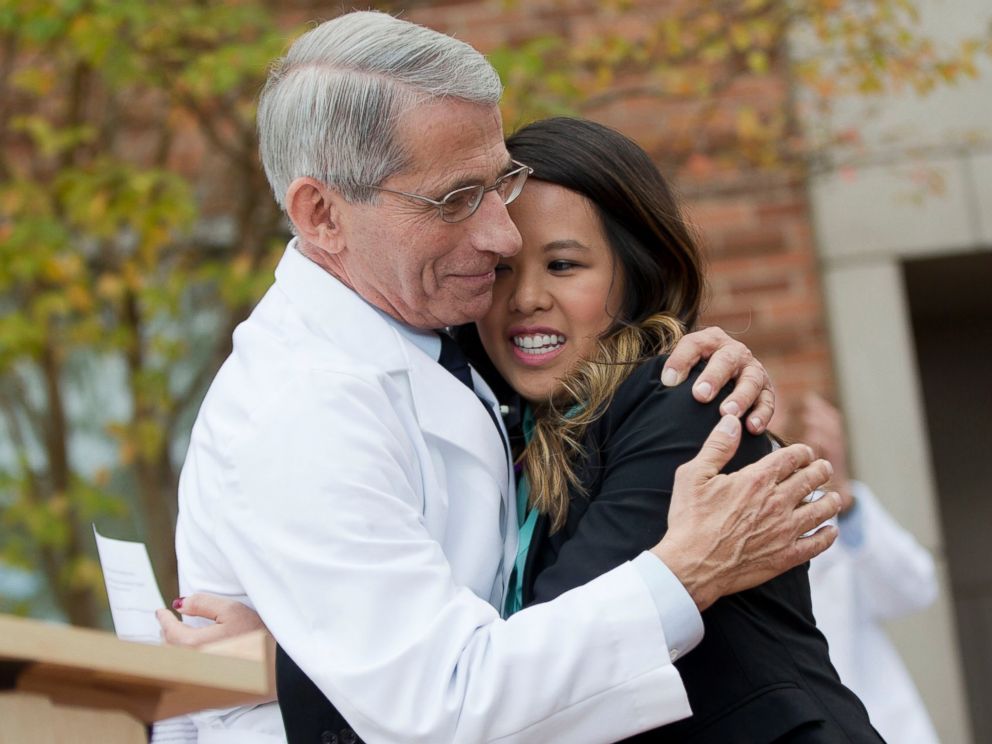Look Inside Isolation Ward Where Nina Pham Was Treated for Ebola
— -- Simple beige walls and Spartan furnishings are what Ebola patient Nina Pham lived with during the eight days she was treated at the isolation block of the National Institutes of Health.
ABC News got a look inside the specially designed unit, one of only four facilities in the country specially designed to handle a contagion of Ebola’s level. This one was designed in 2010 to cope with the threat of outbreaks for diseases such as Influenza or SARS, and then adapted for Ebola.
A small antechamber with negative air-pressure separates the corner room where Pham was treated from the rest of the block, known as the Special Clinical Studies Unit.
NIH’s infectious disease director, Dr. Anthony Fauci, demonstrated the facility and complex biohazard suits used by its clinicians.
It can take over 10 minutes to assemble the apparel known as PPE, for Personal Protective Equipment, and roughly a dozen separate pieces go into it. From multiple layers of the special repellant cloth known as Tyvek to wireless radio transmitters and a respirator, the dizzying process of donning and removing the gear – known as doffing -- is designed to never expose the wearer to contaminated material.
The procedure is so complex that a specially trained observer stands by to supervise with a lengthy checklist.
“There are variations of this process,” Fauci said as two clinicians donned and doffed behind him. “So if some group doesn’t do it exactly like this it doesn’t mean it’s wrong. This is just best for us.”

“This process is not an easy process. The one thing you want to be sure of is that you are at your most fatigued when taking off your material, when you are doffing. And that's when you are most vulnerable of being infected, so that's why you do it very, very carefully,” he said.
Nina Pham was released last week after eight days under supervision at the center. She was diagnosed Oct. 11 after contracting the deadly virus in the process of treating Thomas Eric Duncan, the first to bring the disease to American soil, at a Dallas hospital. Duncan died from the virus.
The disease, for which is there is no proven cure or vaccine, has killed thousands since this year’s outbreak began in West Africa.




